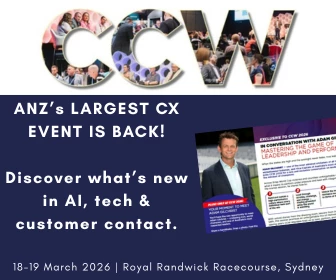Patrick vs. Michelle - Which Customer Service Rep Would Win Your Trust, Loyalty?
Add bookmark"People do business with people they know, like, and trust."
Have you used this business maxim to examine how you and your Customer Service and Sales teams interact with potential customers?
If not, I recommend you do.
I recently had an experience with two different printers that reminded me of how important it is to continually look at the way you treat prospects and clients, and continually coach your team to do the same.
Warning Sign or Green Light?
In this article, we will look at the third factor of the "Know, Like, Trust" maxim—trust—and how your interactions from the very beginning send either warning signs or green lights to prospects.
Here’s what happened….
[eventPDF]
I was putting together a direct marketing piece and wanted to get a quote on the project. I first emailed a local printer, or more accurately a company that acts as a go-between, connecting clients with the printer who can best serve their needs. I emailed my request to the account executive I had worked with previously. I received an automatic email response saying he was out, and that his emails were being forwarded to Michelle X, and to contact her if I had questions.
I also sent my request to an out-of-state printer, audio product producer, and fulfillment house I had one business with once before. I immediately received a confirmation email from one of their account executives saying the following:
Great to hear from you...
I hope your summer is going well...
I should have pricing back to you late today.
Thank you for the opportunity.
Patrick X
What Perceptual and Emotional Take Aways Do You Leave the Prospect With?
Notice the Perceptual and Emotional Take Aways his response created in me:
- Reassurance – "I don’t have to wonder if my email arrived or not."
- Trust--"He and his business are conscientious, so I know I’ll be taken care of" and "I won’t have to continually check in to see if they’re doing what I asked them to do."
- Appreciated—"He appreciates my business. He doesn’t have an entitled, take-your-business-for-granted attitude that often leads to unresponsive service."
A day went by and I had not heard from Michelle X, so I naturally started to wonder if she actually received my email. Notice that Patrick’s thoughtful, reassuring email when juxtaposed with the absence of one from the other printer made the effect of Michelle’s non-response even stronger.
I called Michelle and asked if she had gotten my email. "Yes…It’s at estimating," she responded in a flat, all-business tone of voice. There was no acknowledgment that I had to call to get this information or that it might have been nice to acknowledge my email.
I got off the phone feeling mildly annoyed.
You Want Reassurance, but You Don’t Think Your Customers Do?
Later that day, I received an email from Michelle with a quote. Interestingly, the email came with a Confirm Receipt—i.e. SHE wants to make sure HER emails were received, but doesn’t recognize that clients and prospective clients might want the same.
Since I teach and consult in the area of customer service and believe that if we never give feedback regarding our customer experiences, we’re helping perpetuate mindless customer service, I sent her this email:
Thanks for the quote. Also…in case you’re interested in customer feedback….I noticed you have a return receipt request for your emails, which I take as meaning you want to make sure your clients get the info you sent them.
As a customer…I too would like to know that when I send in a request that it arrived, and not have to call to confirm.
Another printer who I sent in a request sent me back a confirmation and let me know when he would be getting me a price, which obviously creates a more reassuring experience…like this person is conscientious and will take good care of me.
Thanks,
David
The Chance to Recover From The Initial Blunder…Blown
Her response?
"Thank you."
No indication that the message really made an impact or apology for the oversight. To her credit, she at least responded, albeit in a rather mindless, thoughtless way.
What Emotional and Perceptual Take Aways Did She Leave for the Prospect?
Now, think of the Emotional and Perceptual Take Aways her first misstep, followed by her blasê response to my feedback created.
- Mild anxiety and unease—"Did she get my request or not? Am I mistakenly believing a quote is being created or did my email end up in her Trash folder?"
- Mild irritation—"Can’t you just do Courtesy and Smart Business 101 and let someone who wants to give you money know that you received their request, rather than make them wonder if you got it and…do a follow-up call or email?"
- Distrust—"If she’s this mindless and unaware of how to treat clients and would-be clients BEFORE I give her money, what happens after she has my money?" "If this is what it will be like working with her…I’ll pass…"
Now, which provider would you go with?
As we are moving along with the project costing stage, Patrick continued to create the kind of client experience that leads to long-term relationships. He continues to respond to emails promptly. In the most recent voice mail, he ended off with "Thank you for your business" said in the confident, genuinely appreciate tone of voice who has a thriving business AND knows that happy clients make that possible.
How Can You Apply The "Moral" of This Teaching Tale to Your Business?
- Examine your processes for interacting with clients and prospects and ask if the foster trust that you know what you’re doing and that you will treat them well.
- Ask "Does the way we interact with clients and prospects lead to people liking and trusting us?"
- Ask "The way we answer the phones, respond to emails, keep—or don’t keep—clients and prospects in the loop…what Emotional and Perceptual Take Aways do they leave people with?" To answer the previous two questions, have your business mystery shopped.
- Ask "Are we continuing to be mindful of the importance of creating a great experience or have we gotten sloppy?"
- Ask yourself if ALL of our staff understand how importance this is and…if they getting the training, coaching, and accountability to make sure they can and do deliver a great customer experience.
-
Continually involve your team in customer detective work. More specifically, ask them to pay attention to their client, customer, and patient experiences and notice the Emotional and Perceptual Take Away the other person creates in them. Ask them to notice the things that that they picked up on that made a difference. Then, as a team, use these lessons to upgrade the customer experience you are creating.
David Lee is the founder of HumanNature@Work and is an internationally recognized authority on organizational and managerial practices that optimize employee performance and engagement.




















